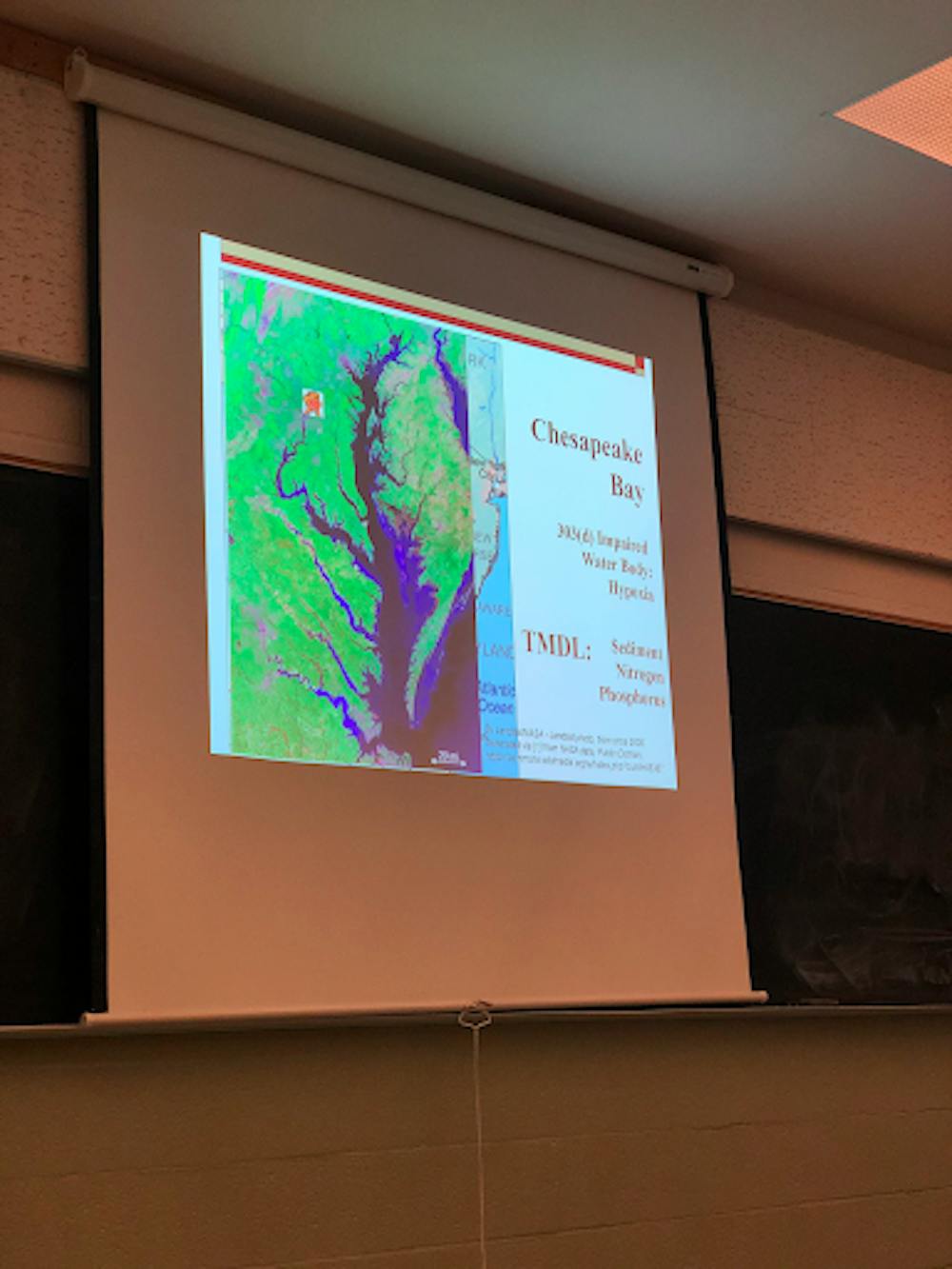Greenery is in the background of urban life and rarely gets much attention. However, it is of great importance for the environment as bioretention gardens.
Allen Davis is the chair for the Department of Civil and Environmental Engineering at the University of Maryland and an internationally recognized leader in the Stormwater Management program. The Hopkins Department of Environmental Health and Engineering invited Davis to speak about stormwater and bioretention at the M. Gordon Wolman Seminar Series.
Davis started off with a general introduction to water in the hydrologic cycle. He explained that there are three ways in which water can go after hitting the ground: up (evaporative transpiration), down (infiltration) and horizontally (surface runoff).
On undeveloped land such as a forest, very little water will become surface runoff. Davis explained how the path of water changes in a developed area.
“Once we put in our buildings, parking lots, rooftops, roadways, it changes our water balance and most of our water becomes horizontal surface runoffs, and we have much less that goes up and down,” he said.
Excess waters that stays on the ground can be erosive, pollute and cause issues in the habitat.
In the case of horizontal runoff, one of the major issues is with stormwater runoff. Unlike typical rain, a storm will generate a great quantity of water collection on the ground in a very short period of time, thus creating a concerning problem as all the water becomes horizontal runoff.
The title of Davis’s talk was “Stormwater and Bioretention: A Tale of Two Nutrients.” In an interview with The News-Letter, Davis explained the importance of phosphorus and nitrogen.
“Those are the impairments for the Chesapeake Bay. It’s stormwater. It’s agriculture. It’s wastewater. It’s septic tank. All of these systems are being looked at carefully for the reduction of nitrogen and phosphorus,” he said.
Currently, there are bioretention gardens — which are composed of sand, topsoil and organic matter as well as vegetation on top — which can improve water quality.
However, studies have shown that despite the current water improvement methods, phosphorus levels in stormwater in the Chesapeake Bay area are higher in the output leaving the system than in the input.
So what causes the excess phosphorus compared to the initial input?
The answer lies in the compost and organic matter that are leaching phosphorus into the bioretention system and elevating the level in the output water.
In order to resolve this problem, Davis explained that he and his team started looking at the Aluminum-Based Water Treatment Residual.
“Aluminum and iron minerals have a high affinity for the removal of aqueous phosphorus,” Davis said in his presentation.
The Al-Based Water Treatment Residual adds inorganic coagulants to remove turbidites, which are caused by suspended sediments in water.
However, just adding minerals is not enough. Davis explained that in order to remove phosphorus significantly, the bioretention media needs to be adjusted as well. Since compost and organic matter leach phosphorus, there should be a bigger proportion of clay and oxides that result in a very low level of phosphorus.
The pros and cons of the bioretention media are carefully considered to create the most balanced and optimal plan of improvement.
Nitrogen, on the other hand, poses another problem. It is present in all layers of the bioretention system in various forms, such as nitrite, ammonium or simply organic nitrogen. Davis explained how this diversity in the forms of nitrogen makes his job more difficult.
“We’re looking at different types of challenges with the different types of nitrogen speciation.” Davis said.
Through his field studies, Davis noticed that all those different forms of nitrogen will eventually nitrify and wash out as nitrate, if not during the first storm event, then after the second event. Thus, bioretention systems do not reduce the amount of nitrogen in the water, but simply change it to nitrate.
In order to address this issue, scientists investigated the nitrogen cycle within the system and created an internal water storage zone.
“Instead of having a straight drain, we upturn this drain to try and keep a submerged layer subsurface,” Davis said.
Davis and his colleagues have found that willow oak wood chips promote denitrification once all nitrate accumulates in the storage zone. Through a layered system where each component either retains or transforms the nitrogen within the system, the problem of a high nitrogen level in the stormwater system has been experimentally reduced.
Urbanization causes problems that often go unseen, such as stormwater runoff and consequently problematic pollution to the environment. Although Davis has provided an improved method to resolve the problem around the Chesapeake Bay, he highlighted how there are still countless issues to deal with.
“There are water bodies that are impaired in the state of Maryland through these various types of pollutants, water quality parameters. And so far, most of these have not been enforced yet,” he said.
The talk concluded by emphasizing the reality of pollutants in water bodies throughout the state of Maryland. However, these issues provide countless opportunities for engineering and improvements to better our environment.





